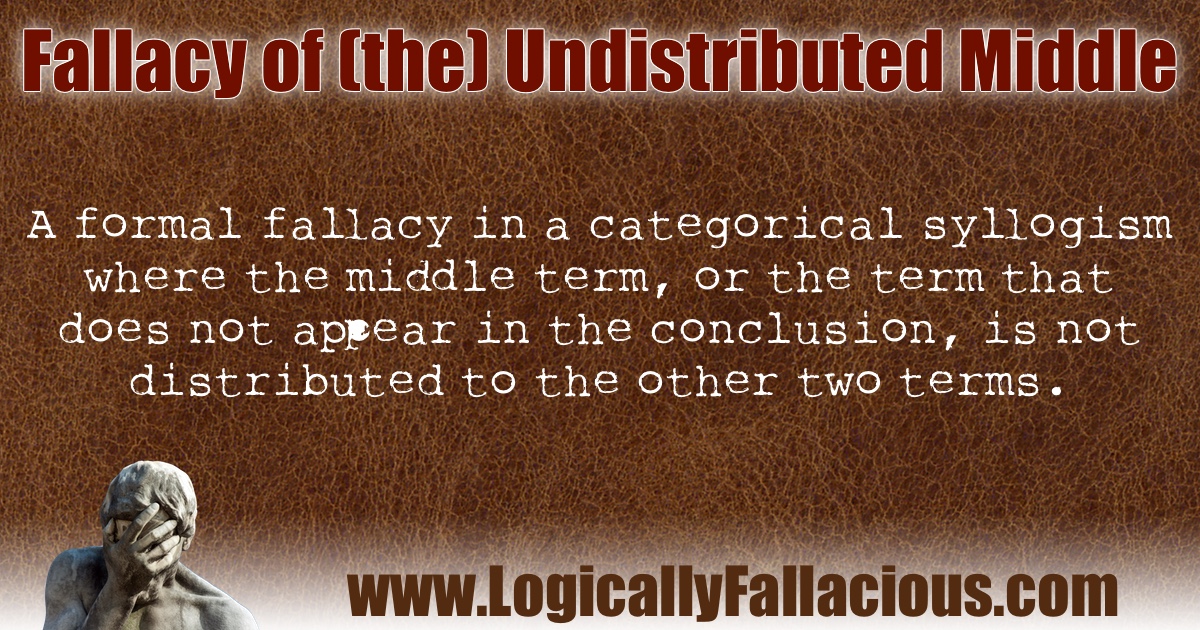(also known as: maldistributed middle, undistributed middle term)
Description: A formal fallacy in a categorical syllogism where the middle term, or the term that does not appear in the conclusion, is not distributed to the other two terms.
Logical Form:
All A's are C's.
All B's are C's.
Therefore, all A’s are B’s.
Example #1:
All lions are animals.
All cats are animals.
Therefore, all lions are cats.
Explanation: We are tricked because the conclusion makes sense, so out of laziness we accept the argument, but the argument is invalid, and by plugging in new terms, like in the next example, we can see why.
Example #2:
All ghosts are imaginary.
All unicorns are imaginary.
Therefore, all ghosts are unicorns.
Explanation: While there may be ghosts that are unicorns, it does not follow from the premises: the only thing the premises tell us about ghosts and unicorns is that they are both imaginary -- we have no information how they are related to each other.
Fun Fact: I have it on good authority that unicorns do poop rainbows.

References:
Goodman, M. F. (1993). First Logic. University Press of America.